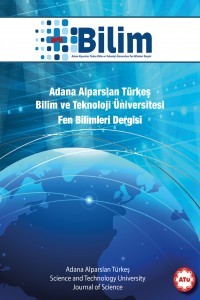LC-DAD-ESI-MS/MS characterization of soybean phenolics extracted with various solvents
Phenolics are broadly distributed in the plant kingdom and the most abundant secondary metabolites of plants. Over the past few years, preparation of phenolic extracts from different plants, purification of phenolic compounds and their identification have become a major area of health- and medical-related research. In this study, the effect of extraction solvents (methanol, ethanol, acetonitrile and acetone), on total phenolic content, antioxidant activity, and the composition of the phenolic compounds in soybean extracts were studied. The antioxidant activity was determined using two different methods: DPPH and ABTS assays. Liquid chromatography coupled to diode array detection and electrospray ionisation tandem mass spectrometry (LC-DAD-ESI-MS/MS) was used for identification and quantification of phenolic compounds. All the parameters analyzed were found to be affected by the extraction method, especially by the solvent used, and the best results were obtained in the methanolic extract. The methanolic and ethanolic extracts exhibited strong antioxidant activity. Genistein-7-diglucoside, daidzin, genistin, 4’ 7 dihidroxiflavan, daidzein, and genistein were found as major isoflavonoids in all extracts.
Anahtar Kelimeler:
Soybean phenolics, antioxidant capacity, LC-MS/MS
___
- [1] Lee J.H., Jeon J.Y., Kim S.G., Kim S.H., Chun T., Imm J.Y., Comparative analyses of total phenols, flavonoids, saponins and antioxidant activity in yellow soy beans and mung beans. Int. J. Food Sci. Tech., 2011, 46, 2513–2519. [2] Nagata C., Takatsuka N., Inaba S., Kawakawi N., Shimizu H., Effect of soymilk consumption on serum estrogen concentrations in premenopausal Japanese women. J. Natl. Cancer Inst., 1998, 90, 1830–1835. [3] Dueñas, M., Hernández, T., Robredo, S., Lamparski, G., Estrella, I., Muñoz, R. (2012). Bioactive Phenolic Compounds of Soybean (Glycine max cv. Merit): Modifi cations by Different Microbiological Fermentations. Pol. J. Food Nutr. Sci., 62, 4, 241-250. [4] Wang, H. J., Murphy, P. A. Isoflavone content in commercial soybean foods. J. Agric. Food Chem. 1994, 42, 1666−1673. [5] Li, Y., Kong, D., Bao, B., Ahmad, A., Sarkar, F. H. Induction of cancer cell death by isoflavone: the role of multiple signaling pathways. Nutrition 2011, 3, 877−896. [6] Albertazzi, P., Purdie, D. W. The nature and utility of the phytoestrogens: a review of the evidence. Maturitas 2002, 42, 173−185. [7] Lee, S.J., Seguin, P., Kim, J. J., Moon, H.I., Ro, H.M., Kim, E. H., Seo, S.H., Kang, E.Y., Ahn, J.K., Chung, I.M. Isoflavones in Korean soybeans differing in seed coat and cotyledon color. J. Food Compos. Anal. 2010, 23, 160−165. [8] Jeng, T.L., Shih, Y.J., Wu, M.T., Sung, J.M. Comparisons of flavonoids and anti-oxidative activities in seed coat, embryonic axis and cotyledon of black soybeans. Food Chem. 2010, 123, 1112−1116. [9] Luthria, D.L., Biswas, R., Natarajan, S. 2007. Comparison of extraction solvents and techniques used for the assay of isoflavones from soybean. Food Chemistry, 105(1), 325-333. [10] Kelebek, H. LC-DAD-ESI-MS/MS characterization of phenolic constituents in Turkish black tea: Effect of infusion time and temperature. Food Chem 204: 227–238 (2016). [11] Kelebek, H., Jourdes, M., Selli, S., and Teissedre P-L, Comparative evaluation of the phenolic content and antioxidant capacity of sun-dried raisins. J Sci Food Agric 93(12): 2963–72 (2013).
- Yayın Aralığı: Yılda 2 Sayı
- Başlangıç: 2018
- Yayıncı: Adana Alparslan Türkeş Bilim ve Teknoloji Üniversitesi
Sayıdaki Diğer Makaleler
DFT study for some components of olea europae
Başak Doğru Mert, Mehmet Erman Mert, Birgül Yazıcı
Vermikülitin yüksek sıcaklık refakter yalıtım malzemesi olarak kullanımı
LC-DAD-ESI-MS/MS characterization of soybean phenolics extracted with various solvents
Otomotiv endüstrisi plastiklerinde kullanılan boyama öncesi yüzey hazırlama yöntemlerinin analizi
Sonlu elemanlar metodu kullanılarak rot üzerinde oluşan gerilmelerin hesaplanması
Erinç ULUDAMAR, Sami Gökberk BİÇER, Mustafa TAŞ
Otonom araçlarda hareket planlaması
Ahmet Kemal NENNİOĞLU, Tahsin Köroğlu
